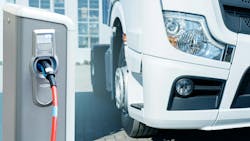By now, you have probably at least heard about the new federal strategy to develop a zero-emissions infrastructure along specific freight corridors in the U.S.
But if you haven’t heard anything, let me offer you a few details. First, it is an effort developed jointly by the Department of Energy and the Department of Transportation.
The purpose of the National Zero-Emission Freight Corridor Strategy is to guide the deployment of charging and hydrogen fueling infrastructure for medium- and heavy-duty trucks. “A core objective of the strategy is to meet freight truck and technology markets where they are today, determine where they are likely to develop next and set an ambitious pathway that mobilizes actions to achieve decarbonization,” according to a news release about the initiative.
It is a four-phase project that prioritizes infrastructure in key freight corridors and hubs. The phases include:
- Establishing priority hubs based on freight volumes (2024-2027)
- Connecting hubs along critical freight corridors (2027-2030)
- Expanding corridor connections initiating network development (2030-2035)
- Achieving national network by linking regional corridors for ubiquitous access (2035-2040)
There are many details you can examine, and I won’t go into them here. However, this effort is exactly what I expect from our government. DOE and DOT’s joint effort should help guide the future so that people can be more confident when making investments in zero-emissions vehicles.
See also: Trucking industry reacts to GHG3 rule pushing zero-emission adoption
One of the concerns fleets express about zero-emissions vehicles is the lack of a nationwide charging/fueling infrastructure. To my knowledge, all the fleets that today are deploying electric vehicles at scale are only doing so in return-to-base operations where the chargers are located at the fleets’ depots. But even with that, getting infrastructure in place is still taking too long. It is one of the things that causes some fleet owners to hesitate about bringing zero-emission trucks into their operation.
I like the phased nature of this strategy, with phase one being where we are now and phase four going out two decades from now. Getting an infrastructure in place for zero-emissions commercial vehicles is a process. But it is a process that has to start somewhere if we will have the infrastructure in place to meet the growing demand for zero-emission commercial vehicles.
The fact that the strategy goes out to 2040 likely means that some parts might not be accurate. Any time you forecast the long-term future, there is a chance some part of your forecast will be wrong. I assume this strategy may change as we progress toward zero emissions, and that’s okay.
I, for one, am glad the DOE and DOT have taken the time to develop a national strategy and taken the first step in making a national charging infrastructure a reality.
About the Author

Michael Roeth
Executive Director
Michael Roeth is the executive director of the North American Council for Freight Efficiency. He serves on the second National Academy of Sciences Committee on Technologies and Approaches for Reducing the Fuel Consumption of Medium and Heavy-Duty Vehicles and has held various positions with Navistar and Behr/Cummins.
